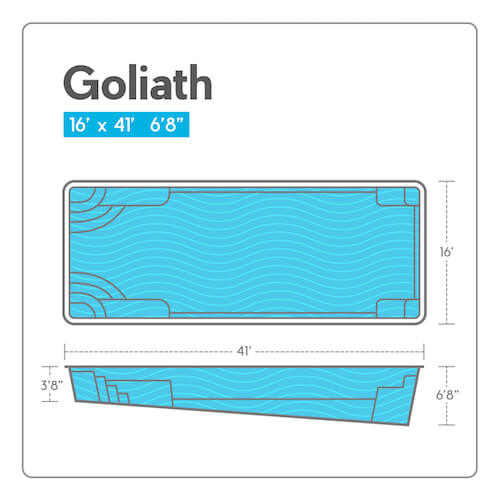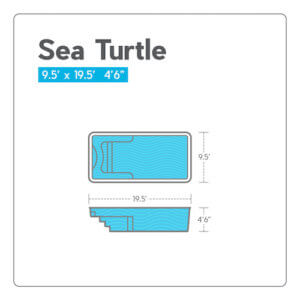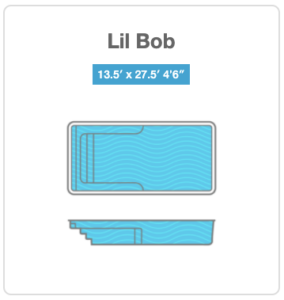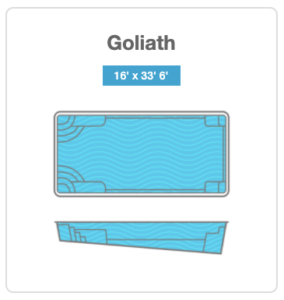A look at in-floor pool cleaning systems and robotic pool cleaners.
Dear General:
Is there such a thing as a “self-cleaning pool”? I’ve heard neighbors talking about in-floor pool cleaning systems, and they claim their pools “clean themselves.” Another one of my friends with a gunite pool has a robotic pool cleaner. I’m not sure I understand the difference between the two, or which is the best choice for us. We’re planning to get a fiberglass pool. Can you shed some light on this topic for me? I’m definitely interested in spending as little time cleaning and as much time swimming as I can.
Signed- Lazy in Lexington, Kentucky
Dear Lazy:
This is a great question. First of all, wanting to spend as much time as possible enjoying your inground pool instead of  maintaining it isn’t lazy. It’s smart.
maintaining it isn’t lazy. It’s smart.
You’re taking a great first step by choosing a fiberglass pool. They’re by far the lowest maintenance pools around, and there’s no single, best choice for everyone when it comes to choosing a system. So, let’s take a closer look at robotic pool cleaners and in-floor pool cleaning systems, considering the merits and drawbacks of each.
What is a robotic pool cleaner?
A robotic pool cleaner is like a Roomba for your pool. You plug it in, drop it in the pool and it moves around, gobbling up dirt and debris. They’re certainly a great alternative to hauling out the telescoping poles and pumps of traditional pool vacuuming systems.
Here are some things you should know about robotic pool cleaners:
- Get the right brushes for your pool type. Fiberglass pool owners and those who have tiled pool walls need to make sure they choose a model that has a soft, super grip PVA brush. If your pool is gunite all around, the rubber brush models will work just fine.
- Get enough cable for the length of your inground pool. This may seem like a no-brainer, but you have to consider the fact that your power supply is most likely at least 12 feet from your pool’s edge. Your robotic cleaner will need to be able to easily reach to the deepest, farthest end of your pool to avoid having to unplug it and move it to the other end.
- Get the right features for your pool type. The most basic robotic cleaners will just vacuum your pool’s floor. The top-of-the-line models have power-washing jets and can also scrub the walls and water line. They’ll be able to get into the nooks and crannies of built-in steps and other pool features. Also, look for a system that has high suction power (at least 70 gallons per minute) and the lowest micron value available (2 microns is great because lower micron values give you the best filtration).
What is an in-floor pool cleaning system?
In-floor pool cleaning systems are comprised of pop-up heads scattered throughout the pool floor, as well as on benches, steps and walls. They’re flush with the pool surface when they’re not in action, and they work in groups, popping up and spraying pressurized water that moves dirt and debris towards the main drain. The pop-up heads also rotate to get at the dirt from various angles. You’re able to set the speeds and length of activation times based on your pool pro’s recommendations and how much cleaning your pool needs.
Here are some things you should know about in-floor pool cleaning systems:
- They must be installed with your pool. Because in-floor cleaning systems are integrated into your pool floor, they must be installed at the time your pool goes in.
- They’re compatible with any inground pool type. Whether you’re planning to install a vinyl liner, gunite or fiberglass pool, in-floor pool cleaning systems will be compatible with your pool project. However, because gunite pools have a rougher surface, you’ll need a lot more pop-up heads than you would with a smoother pool surface like vinyl or fiberglass.
- You’ll still have some maintenance to do. As the name “in-floor”implies, these systems are mainly just cleaning the bottom of your pool. This is great for warding off stains that can occur from debris sitting on the floor of your pool for too long, but you’ll still want to skim the pool for surface and floating debris.
Comparing robotic cleaners to in-floor pool cleaning systems
- Cost. There’s a big cost difference between these two types of pool maintenance systems. Robotic cleaning systems start out around $400 and can go as high as a little over $1000. In-floor pool cleaning systems start out around $5000 and can go as high as $10,000, depending on the size and shape of your pool.
- Automation. Robotic cleaners are not fully automatic. You’ll need to put them in the water, take them out of the water, move them around and clean them out. In-floor pool cleaning systems are fully automated. Regardless of which system you choose, you’ll still have to stick to your pool maintenance schedule, perform regular water testing and add chemicals.
- Noise level. You’ll always know when your robotic cleaning system is running (they’re not exactly ninjas), while in-floor pool cleaning systems are, for the most part, silent.
- Energy efficiency. If you run your robotic cleaning system longer than it needs to be run, you might end up using more energy than you would with an automated in-pool cleaning system that does its job and shuts itself off. In-floor pool cleaning systems also help circulate the pool water, which means it’s circulating heat at the same time, which can reduce your pool operating costs.
To sum it up
So, there’s my two cents on pool cleaning systems. No matter what type of pool cleaning system you choose, you’re going to love having a great quality fiberglass pool. With a pool design for every personality, you’ll have fun with friends and family and improve the resale value of your home. Happy swimming!
Until next time,
The General
Who is The General?
The man, the myth, the legend….we just call him The General. His organized, systematic approach to pool installations over the years had his crew members calling him “The General” and it stuck. The General has over 30 years’ experience in the pool and spa industry, working for one of Pool and Spa News’ “Top 50 Pool Builders.”
Over that time, he designed, sold, project-managed and installed over a thousand inground swimming pools. As a pool owner himself, he’s the perfect authority to give you the inside scoop, with amazing tips and tricks to make pool ownership a breeze!
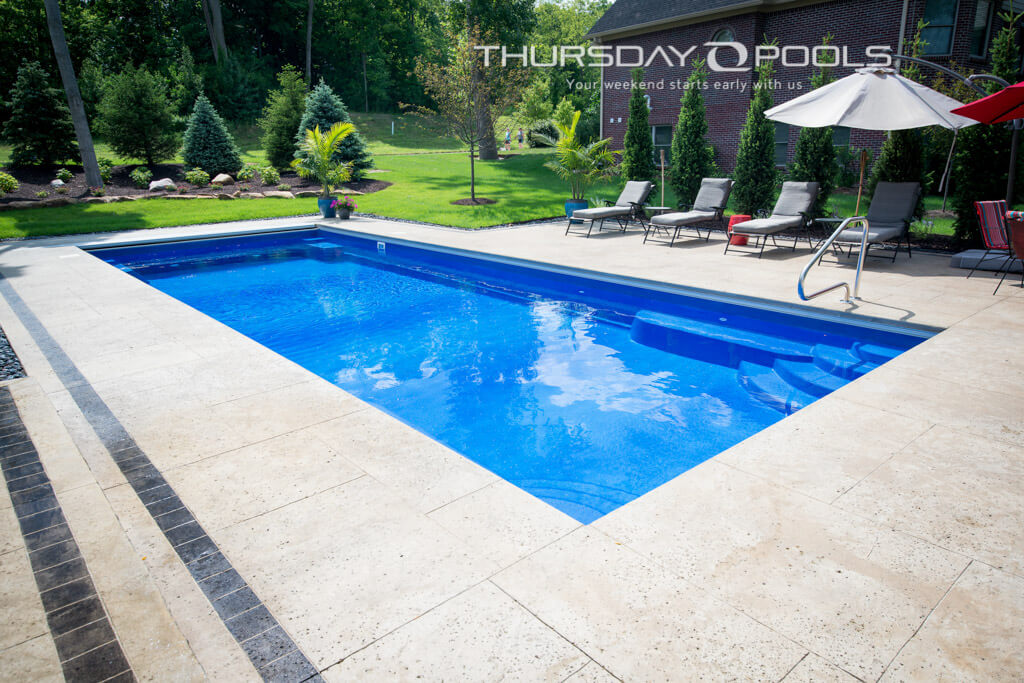
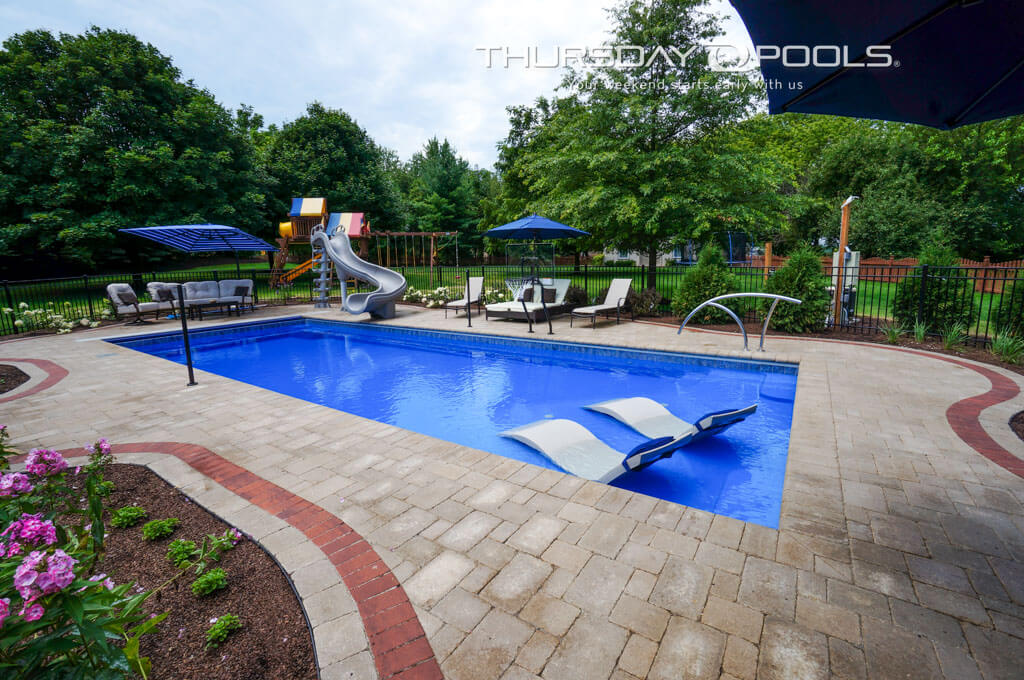
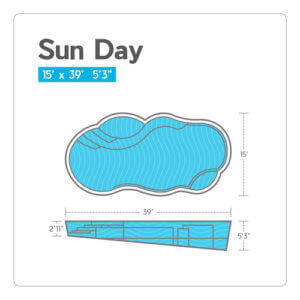 If you’re after the graceful curves of a freeform pool, our Sun Day design might be the perfect complement to your backyard. It’s available in three sizes with a maximum length of 39’. The smallest size is 30 feet long by 15 feet wide. At an average cost of $1500 per linear foot, a basic installation might run around $45,060.
If you’re after the graceful curves of a freeform pool, our Sun Day design might be the perfect complement to your backyard. It’s available in three sizes with a maximum length of 39’. The smallest size is 30 feet long by 15 feet wide. At an average cost of $1500 per linear foot, a basic installation might run around $45,060.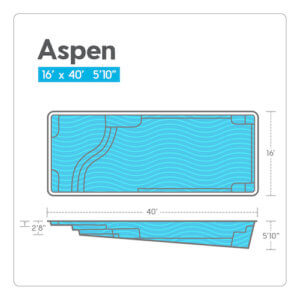 If you have a large yard and truly want the best of both worlds—both wide-open swim space and lots of built-in spots for relaxing—Aspen is the pool for you. With a built-in, 12-inch deep tanning ledge, you’ll have the perfect perch to sunbathe or watch over the kids while they swim. The Aspen is available in three sizes. Let’s check out the largest, which is 40 feet long by 16 feet wide. Applying our formula of an average cost of $1500 per linear foot, a basic installation would be $60,072.
If you have a large yard and truly want the best of both worlds—both wide-open swim space and lots of built-in spots for relaxing—Aspen is the pool for you. With a built-in, 12-inch deep tanning ledge, you’ll have the perfect perch to sunbathe or watch over the kids while they swim. The Aspen is available in three sizes. Let’s check out the largest, which is 40 feet long by 16 feet wide. Applying our formula of an average cost of $1500 per linear foot, a basic installation would be $60,072.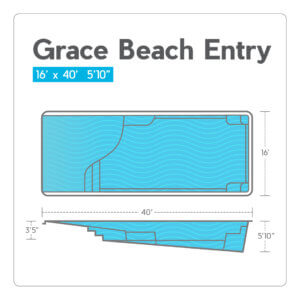
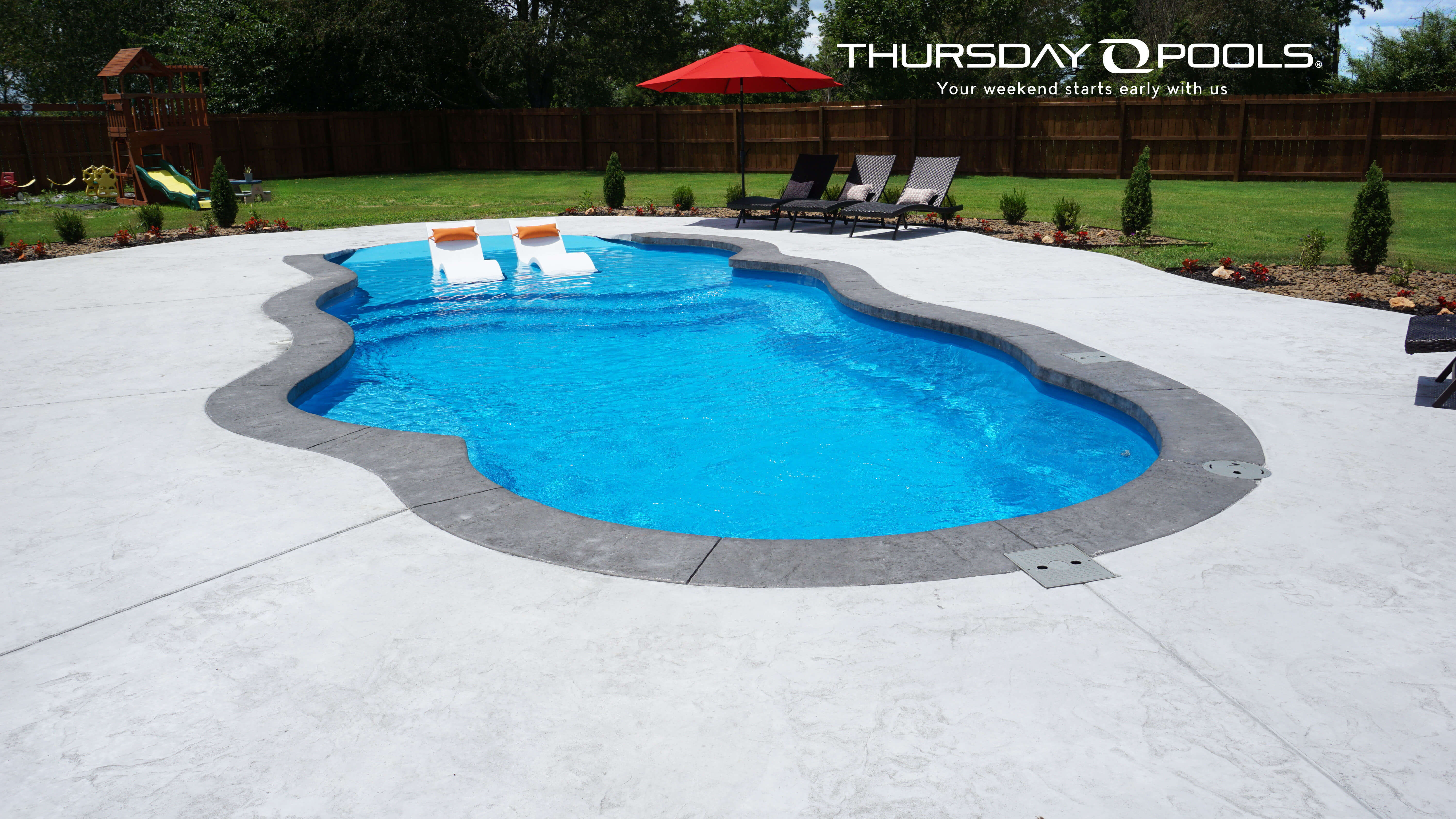
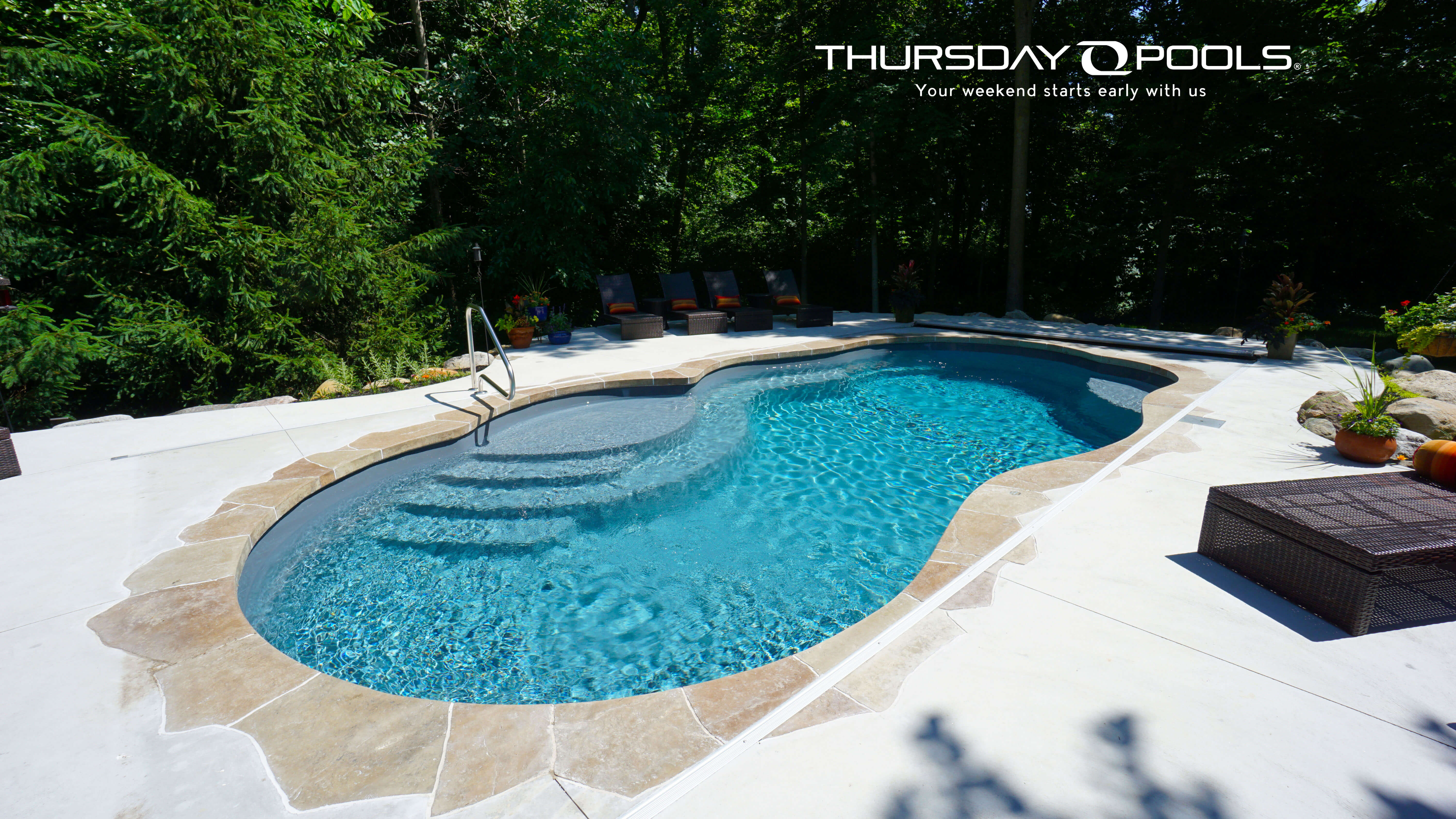
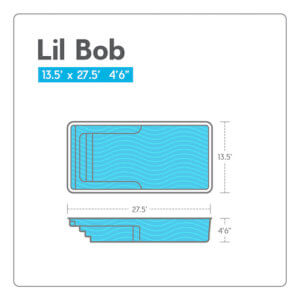
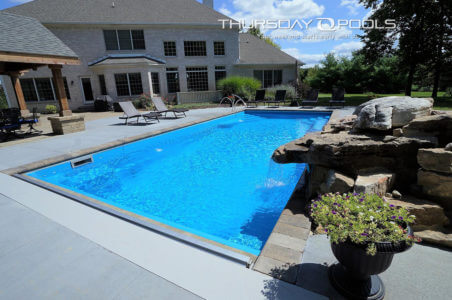
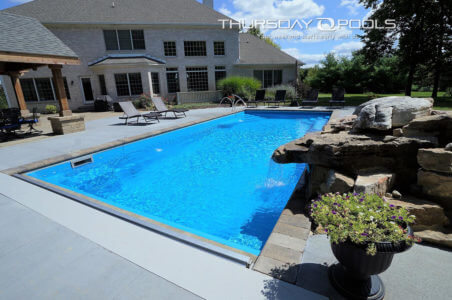 thing to help you accomplish those goals. Water exercise has loads of health benefits, including weight loss, increased strength and muscle tone, joint pain relief, improved cardiovascular health, reduced stress, and increased fun (which is also very good for you!)
thing to help you accomplish those goals. Water exercise has loads of health benefits, including weight loss, increased strength and muscle tone, joint pain relief, improved cardiovascular health, reduced stress, and increased fun (which is also very good for you!) 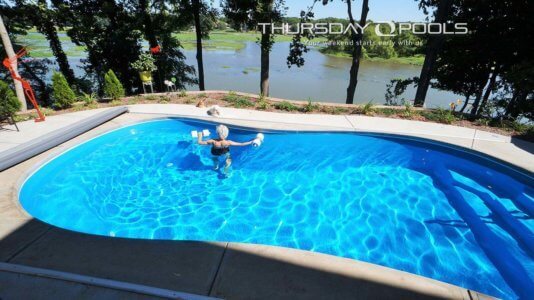 Ready to wade on in?
Ready to wade on in? 